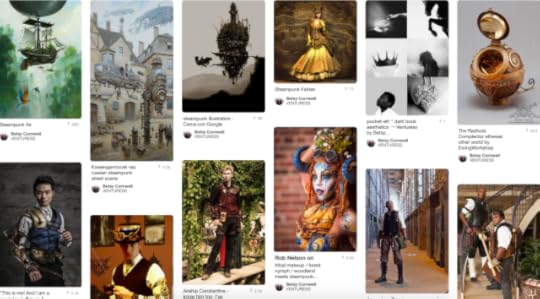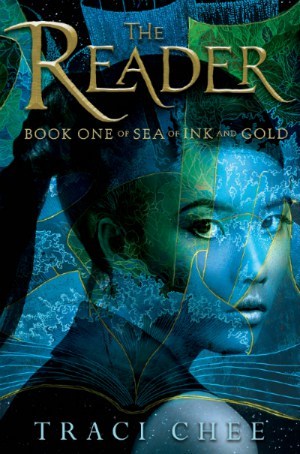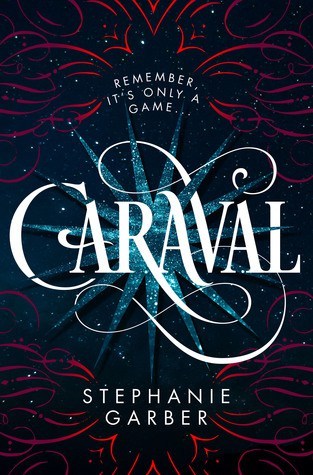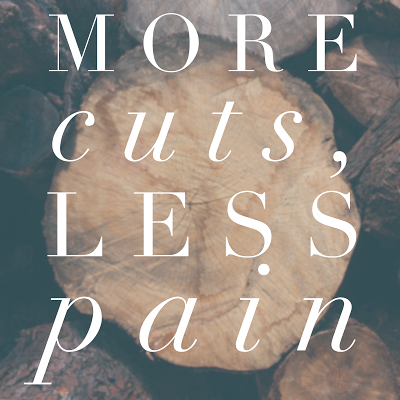Tracey Neithercott's Blog
October 21, 2017
Win 10 Free YA Books

Pop quiz: Do you enjoy free books?
No, I’m obscenely rich.
Yes, obviously.
If you answered A, lucky you. If you answered B, then I have a fun giveaway for you.
I’ve teamed up with nine other YA authors with atmospheric, haunting, or otherworldly themed books for the Eerie October Giveaway. The grand-prize winner will receive a copy of each title you see in the graphic (hardcover or paperback, author’s discretion), and a runner up will win an e-book of each title. International contestants are eligible from any country where Book Depository ships for free.
Enter the Rafflecopter below for your chance to win! 
October 3, 2017
Welcome to the Fall 2017 YA Scavenger Hunt!
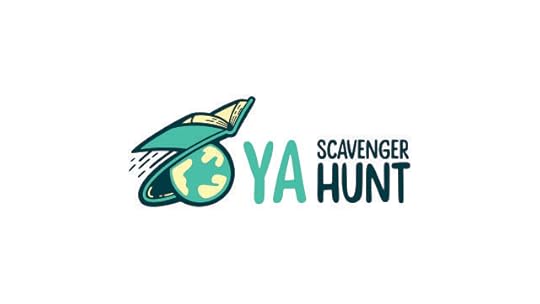
If you’re reading this post, there’s a good chance you’re taking part in the YA Scavenger Hunt, five days of hunting on YA authors’ blogs with the ultimate goal of winning a giant prize.
And if you have no idea what I’m talking about, here’s a little recap:
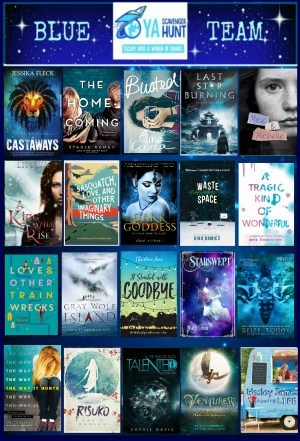 During this hunt, you’ll get access to exclusive content from each participating author, hosted on another author’s blog. (Look for an excerpt from Gray Wolf Island and my inspiration board on Amalie Howard’s site.) You’ll also get a clue—hint: it’ll be a blue number—for the hunt at each blog stop.
During this hunt, you’ll get access to exclusive content from each participating author, hosted on another author’s blog. (Look for an excerpt from Gray Wolf Island and my inspiration board on Amalie Howard’s site.) You’ll also get a clue—hint: it’ll be a blue number—for the hunt at each blog stop.
Add up the clues, and you can enter to win the big prize: One lucky winner will receive one book from each author on my team! But play fast. This contest (and all the exclusive bonus material) will only be online for 120 hours!
For all of the nitty-gritty details—including a list of prizes and participating authors—head to the YA Scavenger hunt page. There, you can find out about all of the teams. I’m on Team Blue, but there are six other teams hosting their own giveaways. You can enter one or all!
• • • •
RULES OF THE GAME
Directions: You’ll notice that I’ve hidden my favorite number in this post. (Hint, it’s in blue.) Collect the favorite numbers of all the authors on the Blue Team, then add them up.
Entry Form: Once you’ve added up all the numbers, make sure you fill out the form here to officially qualify for the grand prize. Only entries that have the correct number will qualify.
Rules: Open internationally. Anyone below the age of 18 should have a parent or guardian’s permission to enter. To be eligible for the grand prize, you must submit the completed entry form by Sunday, Oct. 8, at noon Pacific Time. Entries sent without the correct number or without contact information will not be considered.
• • • •
MEET THE AUTHOR
 Today I’m hosting Betsy Cornwell, the New York Times bestselling author of Tides, Mechanica, and Venturess. She graduated from Smith College and was a columnist and editor at Teen Ink before receiving an MFA in creative writing from Notre Dame, where she also taught fiction. After grad school, she ran away to Ireland to live with the fairies, and she now resides in a small cottage on the west coast with her horse-trainer spouse. To learn more, visit her website, and follow her on Twitter, Instagram, and Facebook.
Today I’m hosting Betsy Cornwell, the New York Times bestselling author of Tides, Mechanica, and Venturess. She graduated from Smith College and was a columnist and editor at Teen Ink before receiving an MFA in creative writing from Notre Dame, where she also taught fiction. After grad school, she ran away to Ireland to live with the fairies, and she now resides in a small cottage on the west coast with her horse-trainer spouse. To learn more, visit her website, and follow her on Twitter, Instagram, and Facebook.
Betsy’s latest book is Venturess, the sequel to her Cinderella retelling Mechanica. Here’s a bit about the book:
The young inventor Nicolette Lampton is living her own fairy-tale happy ending. She’s free of her horrible stepfamily, running a successful business, and is uninterested in marrying the handsome prince, Fin. Instead, she, Fin, and their friend Caro venture to the lush land of Faerie, where they seek to put an end to the bloody war their kingdom is waging. Mechanical armies and dark magic await them as they uncover devastating secrets about the past and fight for a real, lasting happily-ever-after for two troubled countries–and for themselves.
Add Venturess to your TBR on Goodreads. • Purchase the book here.
• • • •
EXCLUSIVE CONTENT
In the novel writing course I teach here in Ireland, I tend to go on and on about discipline, about how much of the writing process means showing up even when you’re not inspired, even when writing is the opposite of fun.
…That said, I probably had more fun writing Venturess than I did with either of my two previous books. I knew enough about my own writing process by then that, while I still dealt with the same doubts and insecurities, I was able to see them coming and work around them in more effective ways. I knew the mental tricks to play on myself to get myself to write, and even to enjoy writing (most of the time!).
Plus, Venturess is a steampunk fairy tale, and it’s hard for me to think of two genres that are more fun to play with than those. It’s also a novel that exists in a world I had already built in my Cinderella retelling Mechanica, so I got to play around in that alternate-universe Victorian England and its colony, Faerie, without worrying about a lot of the logistics that come with making up a setting in the first place.
I make a playlist for every rough draft as I write, and I think the songs I chose for Venturess reflect exactly how much fun I had with this book. You can find an expanded playlist here, but these are the songs that were most important to me as I set the feminist fantasy-adventure tone.
And yes, there are two Ingrid Michelson songs. She was kind of my patron saint for this project.
1. Ingrid Michaelson, “Wonderful Unknown”
2. Cloud Cult, “You’ll Be Bright (Invocation Part 1)”
3. John Spillane, “Passage West”
4. Seth Glier, “The Next Right Thing”
5. Josh Ritter, “Change of Time”
6. My Brightest Diamond, “I Have Never Loved Someone”
7. Ingrid Michaelson, “Afterlife”
I also probably had way too much fun, and definitely procrastinated too much, making this Venturess inspiration board. It all counts as research, right?
• • • •
ANOTHER GIVEAWAY!
In order to enter the contest for your chance to win you need to know that my favorite number is FIVE. Add up all the favorite numbers of the authors on the blue team (did you find mine, yet?) and you’ll have all the secret code to enter for the grand prize.
On top of that grand prize, you have a chance to win a different and totally separate giveaway! Fill out the Rafflecopter info below to win a copy of Gray Wolf Island!

April 10, 2017
Win 1 of 3 Prize Packages!
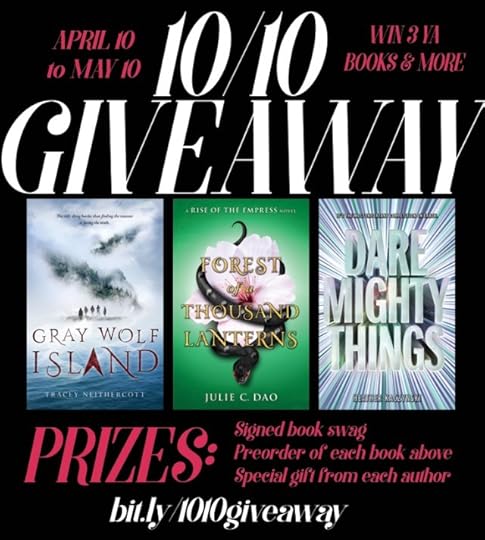
I’m kind of having a hard time wrapping my brain around this: In six months, Gray Wolf Island will be out in the world.
Gimme a sec:

December 14, 2016
Win Free Books

Hey, guys!
Blah blah blah stuff you’re not going to read because of that title. Blah blah blah blah.
If you’re the kind of person who reads a post before entering a giveaway, be proud. Not only do you get to find out why I’m giving away free things (a mostly underwhelming ta-da after that setup), but chances are you’ll also make it through life without signing away a vital organ in an attempt to win a free car.
So, here’s the deal: I have a newsletter. It’s full of news. Composed of letters.
It basically does what it says on the box.
To celebrate its first-ever issue, I’m giving away four of my favorite YA books (click the covers below for my Goodreads reviews).
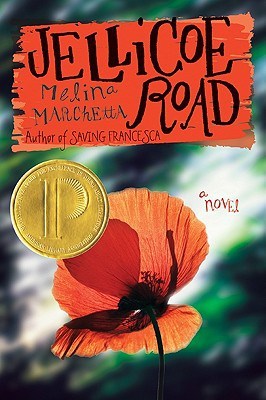
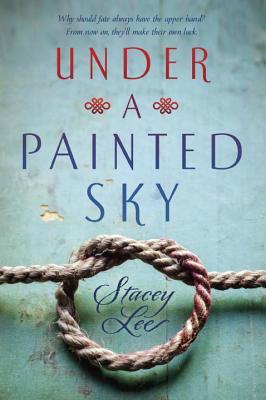
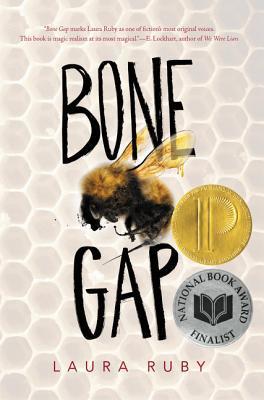
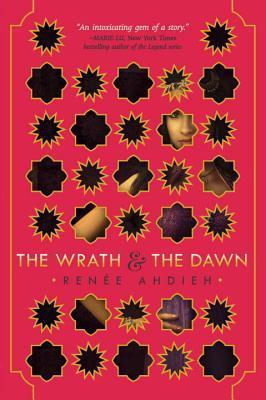
You can enter a bunch of times, but the only real catch is this: To win, you have to be a newsletter subscriber.
The winner will be announced in my January 2017 newsletter.
Ready? Then go:
a Rafflecopter giveaway
October 31, 2016
A Real Halloween Ghost Story
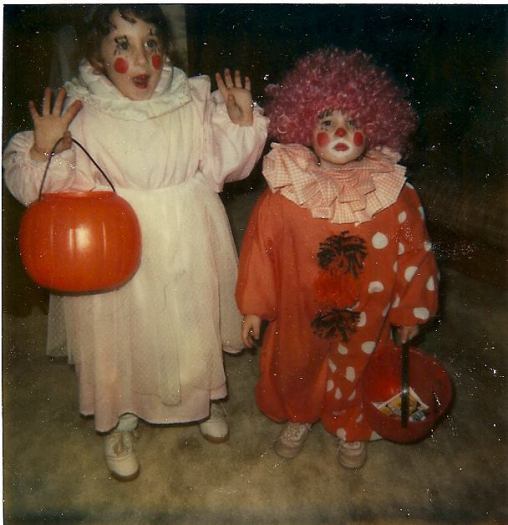
In honor of Halloween, I’m re-posting a true story I told on my blog a few years back. It goes like this:
There might have been a ghost and there might not have been. You can decide which option is scarier.
It was a warm autumn day that started with a cold morning. I’d woken too early, as I did every weekday because the school district was determined to singlehandedly ruin my life. It was still early when I finished getting dressed, scowling at the cute outfit that wouldn’t distract from my full mouth of metal. Though I was only in middle school and technically expected to trash my room with discarded clothing and whatever else middle schoolers can’t be bothered to put away, my bedroom was spotless. I am and was and will always be a neat freak.
This is important. As I left my room, shutting off the light before I traipsed downstairs to catch the bus, everything was in its place. Clothes in the closet. Full-length mirror against the wall. Rocking chair in the corner. And a collection of framed photos arranged in a pattern beneath the circular mirror that hung over my vanity.
My father left for work first. Maybe long before the bus came or maybe minutes. It doesn’t matter. My sister and I went next. My mother, who didn’t have a job but was somehow always busy, did something unmemorable that day. The what isn’t the point. It’s the when.
She left the house some time in the morning and didn’t come home until minutes before my sister and I got out of school. It had been hot that afternoon, too hot for the long pants and shirt I’d worn that morning. I went up to my room to change into something cooler, something that wouldn’t have me sweating through hours of homework.
That’s when I saw them.
Four pictures that used to hang on the wall above my vanity lay in the middle of my room. They were too far to have fallen from the wall and tumbled down the furniture. But that didn’t matter. Even if their fall had somehow catapulted them across the room, they would never have arranged themselves, face up, in the exact pattern they appeared on my wall just that morning.
Straight lines, even spaces between frames. The precision with which the photos had been arranged was amazing. It had to be my mother.
Only it wasn’t. Nor was it my father or sister.
For years I thought they had all played a trick on me. I didn’t freak out and I didn’t lose sleep over the practical joke. But I never forgot it. A week ago, I asked my family again who had arranged my photos in the middle of my room. They all denied it. My mom even admitted to real fear over the mystery. My parents changed the locks on our house that week even though there was no sign of forced entry. They too often think about the mystery of the picture frames. It’s impossible to forget.
Because it could have been a ghost, if you believe in that sort of thing. Or it could be someone else. Someone living.
Happy Halloween!
Yep, that’s me in that photo above. I begged my mother to get rid of the coat—fairies didn’t get cold!—but I lost.
September 18, 2016
In Other News
So I’m doing this thing.
Actually, I’m attempting to do this thing. Mostly I’m flailing around.

But fancy Internet skills or not, I’m creating a newsletter. In the next month or so, I’ll be sending out the first one—complete with words and pictures and stuff.
If you like that sort of thing, you should sign up. My mom says it’s going to be great.
There may also be sneak peeks and giveaways in the future. In case you like that sort of thing.
For now, though, I’ll leave you two things:
1. The link to the sign-up page.
2. This edit of Stranger Things into a romantic comedy. (And if you haven’t watched the show yet, you are seriously missing out!)
September 12, 2016
An Interview With (And Fangirling Over) The Reader’s Traci Chee
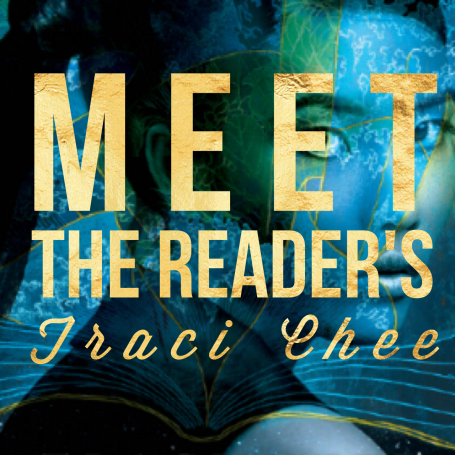
Sometimes I get really, really lucky.
Take, for instance, that time when I snagged an interview with Traci Chee about her debut novel The Reader. What made this extra lucky was that she sent along an ARC, which I devoured with a side of tea and chocolate. (My review is here.)
Anyway, I gave Traci a ring and promptly forced myself to ask real questions instead of spending an hour gushing about all of the things I loved about The Reader.

From far away, Traci’s writing journey seems like a straight shot skyward: About 18 months after writing The Reader, she snagged an agent. Once it was in editors’ hands, the book was snapped up quickly.
But all of that came after decades of hard work—she began honing her writing craft when she was 18, went to college for creative writing, and began a teaching career. Taking a leap of faith, Traci quit her job to write full time. And that, lucky for us, led to The Reader.
The book’s out today, and if you haven’t already bought it, get thyself to a bookstore. (And while I’m not opposed to e-books in the least, you’ll want this in print form to fully appreciate the extras—more on those below.)
Oh, and that interview I mentioned? It’s up on the Swanky Seventeens blog. It’s also below, for those of you who are a bit too lazy to click the link. (No shame.)
Sefia knows what it means to survive. After her father is brutally murdered, she flees into the wilderness with her aunt Nin, who teaches her to hunt, track, and steal. But when Nin is kidnapped, leaving Sefia completely alone, none of her survival skills can help her discover where Nin’s been taken, or if she’s even alive. The only clue to both her aunt’s disappearance and her father’s murder is the odd rectangular object her father left behind, an object she comes to realize is a book—a marvelous item unheard of in her otherwise illiterate society. With the help of this book, and the aid of a mysterious stranger with dark secrets of his own, Sefia sets out to rescue her aunt and find out what really happened the day her father was killed—and punish the people responsible.
Purchase The Reader at Amazon, B&N, or Indiebound.
ON WITH THE INTERVIEW
Tracey: What comes easiest to you: plot or character? Do you plan these out ahead of time, or discover them as you go?
Traci: There’s only one thing that just comes to me easily, and it’s “that’s a cool idea.” I’m terrible at characters because it takes so long to find them.
I’m naturally a pantster, because for me writing is thinking. I don’t really know what’s going to happen, and then the words find me through the page. For me, it’s figuring it out as I’m doing it. I tried plotting out Book 2. I read that “100K a Day” book. It didn’t work out. Now, with the sequel, I’m learning how to draft on a deadline.
Tracey: This was a really intricate plot—multiple point-of-views, multiple timelines, a large cast of characters. Did you plot it all out? How did you go about making everything so interconnected?
Traci: In its original draft, this whole world was a girl with a book on a ship reading about a boy with a book on a ship. The library plotline came up later—I needed a mentor character to teach the reader the rules of the world.
It was extraordinarily difficult to keep track of the different timelines and how they all intersect. I invented strategies to keep track of things. There were a lot of charts and graphs. I relied a lot on the hero’s journey. And then I wanted all of the other stories to have mini heroes’ journeys.
Tracey: One thing I really loved about the book is all of the added details—the blood smears on the pages, the words written beside page numbers, blacked-out sentences. It made me feel like I was reading the book alongside Sefia. Was that an idea you had from the start, and what was the process like with your publisher to make it happen?
Traci: I brought it up to my publisher, and they ran with it. I’m so excited. I’ve been fascinated by the power of books and the book form since college. I’ve done quite a bit of museum-going in “what are the shapes a book can take?” I had some of the secret messages—not planned, but I hoped for them. It was a really interesting and fun experience working with people who are professional bookmakers on this.
Tracey: A lot of times, books with main characters of color don’t always have that reflected in the cover. Was this something you discussed with your publisher?
Traci: I was really lucky in that from the beginning. Right after I signed, my editor asked me for ideas for the cover. I was very fortunate that they showed me what they were doing and I liked what they were doing.
LIGHTNING ROUND
Where do you write?
At my desk.
Music or silence?
Both—it depends on how I feel.
Book you’re embarrassed to admit you’ve never read?
Any Hemingway
Paper books or e-books?
Paper. I like marking up my books. I like dog-earing my pages. When I read a book with those, it makes me feel like an archaeologist when I’m reading something someone else read.
Which fictional characters would you like to stumble upon in real life?
I’d love to find out the characters from The Book Thief are real because I love them so much. There’s this book coming out next year called Stalking Jack the Ripper by Kerri Maniscalco. I’d want to be friends with the main character and go solving mysteries with her. And this one isn’t a person, but I would love it if the time traveling ship from Heidi Heilig’s The Girl from Everywhere was real.
Greatest piece of writing advice you can give aspiring authors?
Always keep learning. That is my general philosophy in my writing. I feel like to keep growing as a writer, I need to keep honing my craft. Whenever I start a new draft, I’m looking for ways to get better.
Traci Chee is an author of speculative fiction for teens. An all-around word geek, she loves book arts and art books, poetry and paper crafts, though she also dabbles at piano playing, egg painting, and hosting potluck game nights for family and friends. She studied literature and creative writing at UC Santa Cruz and earned a master of arts degree from San Francisco State University. Traci grew up in a small town with more cows than people, and now feels most at home in the mountains, scaling switchbacks and happening upon hidden highland lakes. She lives in California with her fast-fast dog. The Reader is her YA debut.
Follow her on Twitter and Facebook, or visit her website.
August 11, 2016
4 FANTASIES TO READ
So I’ve been on a bit of a fantasy kick, which has nothing to do with working like crazy and wanting an escape from real life.
Almost nothing.
Anyway, I assume your to-be-read list is like mine—tall and mocking. Nothing says fun like a teetering tower of books. Here are four more to add to your pile:
AVAILABLE NOW

The Wrath & the Dawn was one of my favorite books last year, and I count its sequel, The Rose & the Dagger, as one of my top books of 2016. The world was just as lush, the characters just as layered, and the prose just as evocative as the first. What I loved so much about this book was that Ahdieh doesn’t pointlessly complicate Shahrzad and Khalid’s romance with misunderstandings or wavering feelings. These two never falter in their love for and faith in one another, and it made me love them (and the romance) all the more. On top of that, the book is fast paced and exciting—there’s war, betrayal, magical carpets, and flying serpents. It’s exactly the story I was hoping for in this series conclusion. Renee Ahdieh is now and auto-buy author for me.
COMING SOON

This book surprised me in the best way possible. I knew it was about a girl and a boy and a book. I didn’t expect it to be such an experience. We have the main story—Sefia is in search of her aunt, using a mysterious object (a book) to guide her way. But that’s only the most basic plot. There’s a story about the past, a book within a book, a monster boy with big heart, and a pirate you’ll adore. Here’s where it gets even more fun: the pages of The Reader are marked up in the same way Sefia’s book is. (Don’t miss the hidden messages by the page numbers!)
The Reader is a love letter to language and reading. It’s no surprise, then, that Chee’s prose is beautiful—the kind you highlight and come back to again and again.
I’m currently dying for the sequel. Like, I’m pretty sure that’s why I have a headache and stuffed-up nose. This is an actual medical thing.
Cool fact: I’ll be posting an interview with author Traci Chee next month on The Swanky Seventeens blog, and a longer version here. Stay tuned.
COMING IN 2017

There are so many reasons I adored The Daughter of the Pirate King, not the least of which is that it’s set on the high seas and is about a bunch of pirates. (I mean, PIRATES, guys!) But even more than that, I loved Alosa.
Raised by the Pirate King, Alosa is ruthless and driven, staging a kidnapping to get to a legendary treasure.
Slight spoiler (highlight to read): I really liked how Levenseller lets Alosa be ruthless, killing people purposefully and without remorse. I was worried she’d be softened to be more likable, but this felt like a realistic pirate girl bent on making her father proud. Besides, there were plenty of other things that softened me to Alosa.
She’s smart, she’s calculating—but she’s also spirited and funny and exactly the kind of heroine I want to hang out with for 320 pages. I loved watching her play the role of the outsmarted damsel … then outthink her captors time and time again.And then there’s Riden, the first mate who’s smart and kind and, yes, totally swoonworthy. Their romance was slow building and so entertaining—it’s a battle of wits between them, which I adored.
Daughter of the Pirate King has a quick, cinematic quality (think Pirates of the Caribbean minus Johnny Depp), which made the book fly by. I read this in one sitting—it’s that exciting and fast paced.
I will now commence impatiently waiting for a sequel.
It’s no wonder the film rights to Caraval have been sold: Reading this book was like watching a film—gorgeous set pieces, splashes of color all over the place, and a world unlike any I’ve ever read about. (In my mind, it took on the same quality as Baz Luhrmann’s Moulin Rouge.) The world of Caraval is beautiful and bone-chilling, the sort of place you want to get to know and never visit.
Garber’s story has been compared to The Hunger Games, which isn’t exactly accurate, unless you count the fact that both have a game. But Caraval felt more like a mystery, a puzzle: Follow the clues to win the game.
Of course, nothing is as it seems at Caraval, and Garber kept me guessing. Who is Legend? Where is Scarlett’s sister? Is Julian good or bad? Will everyone make it out alive?
It was easy to like Scarlett—she’s practical and cautious (to a fault, as she learns throughout the story), but her hesitancies felt real. Above all that, she’s fiercely protective of her sister.
That’s what I love so much about Scarlett: There’s a super hot guy she’s pretty sure she’s falling for, but everything she does is to save her sister. (Though let’s be serious, I loved the romance between her and Julian and was ready for them to JUST KISS ALREADY from the moment they arrived at Caraval.)
I’m so excited there’s a sequel so we get more of Scarlett and Tella. If you’re looking for a fantasy in a wholly new and originally world, this is it.
What have you been reading?
July 24, 2016
CHANGING AS A WRITER
KALI BY GABOR SOMOSKOI FEATURING ZSOFI FENYVESI
When you get to be a certain-aged adult (which is basically anything over 25), you get this idea in your head that you’re the you you’re always going to be. It’s the idea that growing is for kids and once your body has settled on a shoe size, that’s that. You’re you.
I had this idea about my writing after I wrote my first novel. I drafted that sucker in a month. I felt pretty pleased with myself.
“That’s the kind of writer I am,” I told myself. “I don’t outline. I write fast. I love drafting. And I’m pretty sure revising is of the devil.”
I held onto that version of writer me. I am a pantster, a fast drafter, and a despiser of all things revision.
But by the time I was ready to write the next book, I was … broken. I couldn’t start it.I became very shouty at myself. The Man sent me these really worried looks, then he put on his noise-cancelling headphones and mumbled something about writers.
“I DON’T OUTLINE!!” I said it over and over again. Except, maybe I do. Because for that second book, I made an outline. And then I could write.
So that was it. I had been mistaken after the first book.
“That’s the kind of writer I am,” I told myself. “I outline. I write fast. I love drafting. And I’m pretty sure revising is of the devil.”
I held onto that version of writer me. I am a plotter, a fast drafter, and a despiser of all things revision.
But by the time I was ready to write the next book, Gray Wolf Island, I was … broken again. Only this time it was worse. I outlined. I started it. And I was slow.
No, that’s a lie. I was SLOW.
“I AM A FAST WRITER!!!” I said it over and over again. I whined about it to friends who were very kind with my fragile writer brain.
No matter what I tried, I stayed broken. I wrote the entire book slowly. Writing each page was like pushing blood up through my pores. It was a disgusting and scary process for someone who still considered herself a fast writer who loved drafting.
When it came time to revise, I steeled myself for the horror.
It wasn’t there.
The revision thing? Way easy.
I had no idea who I was anymore, because the Writer Tracey I knew despised the whole ordeal, but this me? This me was tossing around words like “fun.”
Last week, I turned in a round of edits on Gray Wolf Island and the process was—yes, I’m going to say it again—fun. Unlike drafting my new WIP. Which brings me to a revelation I had: I’ve changed.
I’m not the type of writer I was when I first started. Drafting is full of doubts and fears, while revision is a process I love. And that’s okay.
I think we stuff ourselves into boxes, partially because so many writing articles force us into them: Are you a plotter or pantster? Do you write fast or slow? Do you revise as you go or do you get it all on the page first?
It’s taken me a long time to realize it’s okay to change. It’s okay to vary your process from year to year or book to book. We’re not expected to stay the same version of us from the cusp of adulthood into eternity.
Kind of freeing, isn’t it?
June 13, 2016
Pain-Free Guide to Slashing Your Word Count
In the before days (several months ago), I had a very specific and painful process for cutting words, sentences, scenes, and chapters from my books:
1. Procure chainsaw.
2. Slice off limbs.
It wasn’t the kind of approach to cutting I wanted to use long term. Mostly because I only have four limbs.
Fact is, cutting a manuscript hurts. After days and weeks and months of writing a story, the last thing you want to do is trash words. It feels wasteful. There are writers in the world starving for words, and there you go throwing yours out.
During my last round of revisions, I had a breakthrough. I’ve actually been holding onto this gem of a tip for months because I
So here it is—four pain-free* steps to cutting your word count:
1. Print your manuscript.
After reading my book so many times on screen, doing a full read on paper is super helpful.
2. As you read, strike out words, sentences, paragraphs, even full scenes and chapters to cut.
Do not freak out. You’re simply scribbling out ink on paper. Your manuscript is still safe and sound—and in its original, lengthy glory—on
your computer. Later, you can veto any marks you make, so go wild.
3. When you’re done editing on paper, open your digital file and highlight all of the sections you marked to cut.
Forget about all of your other edits. Simply go page by page through your printed manuscript and, whenever you’ve marked a word or passage to be cut, highlight it in the file.
I use Scrivener, so at this stage I simply highlighted words or chunks of text bright yellow, as noted on my printed page. I didn’t stop to think about whether I wanted to cut that text. It’s a very fast transfer from paper to Scrivener file.
4. Revise.
Now it’s time to revise as you typically would. I should point out that, at this point in my revision, I was completely unaware I was a genius. I feel very humble pointing that out.
Here’s what happened: Whenever I got to a word or section highlighted yellow, I knew I had two choices: cut or keep. Except in my mind, I’d already let those words go—twice. And so cutting wasn’t punch-to-the heart terrible like it was in the past.
It’s sort of like telling your brain to be prepared because some time real soon you’ll be getting rid of words and scenes and it better not put up a fight. And then telling it again. By the time you get around to cutting those words and scenes, your brain will be like YES, THANK YOU, I GET IT —NOW STOP.
Alright, lay it on me: What’s your best writing or revising trick?
*Results may vary.

